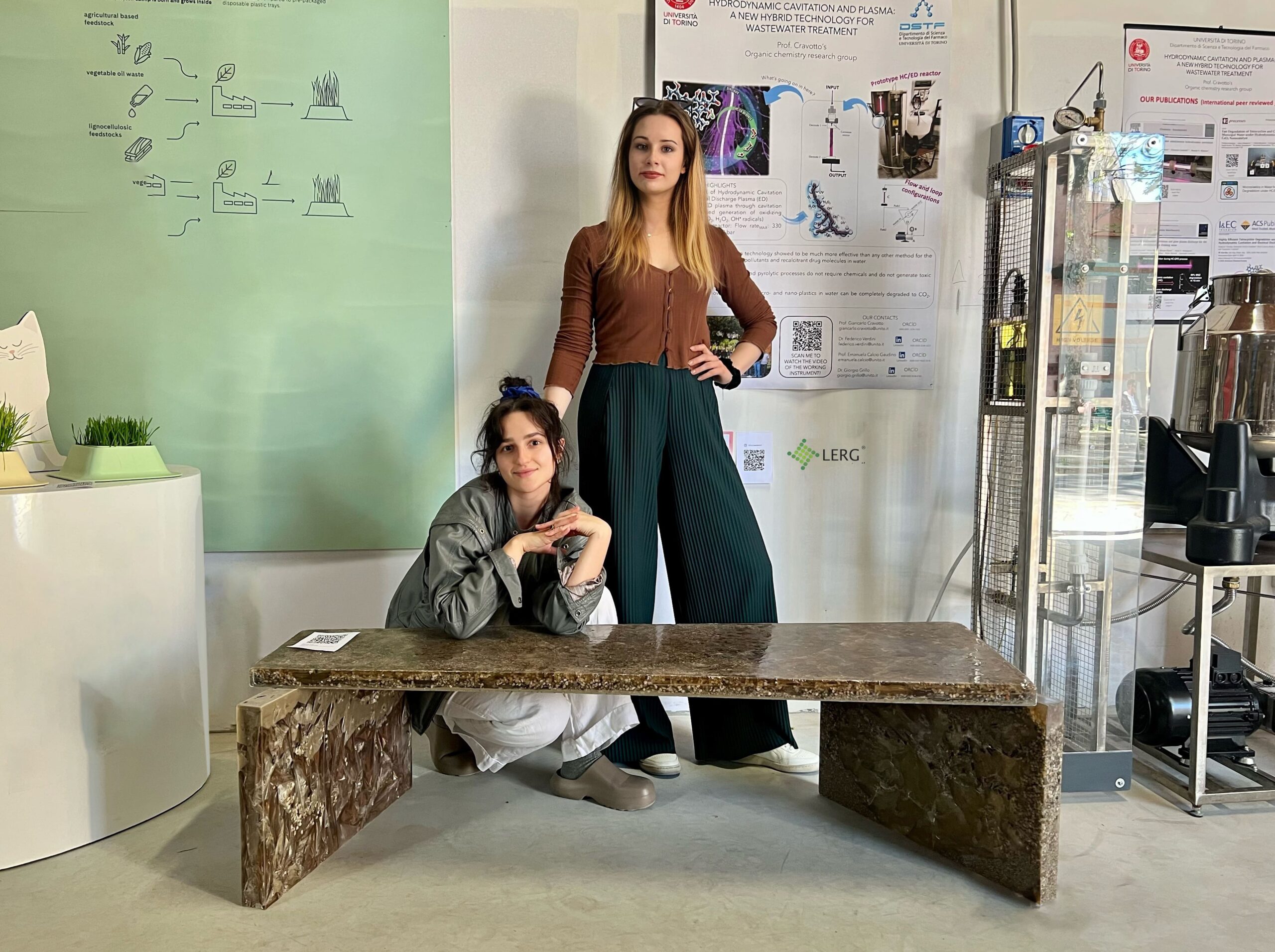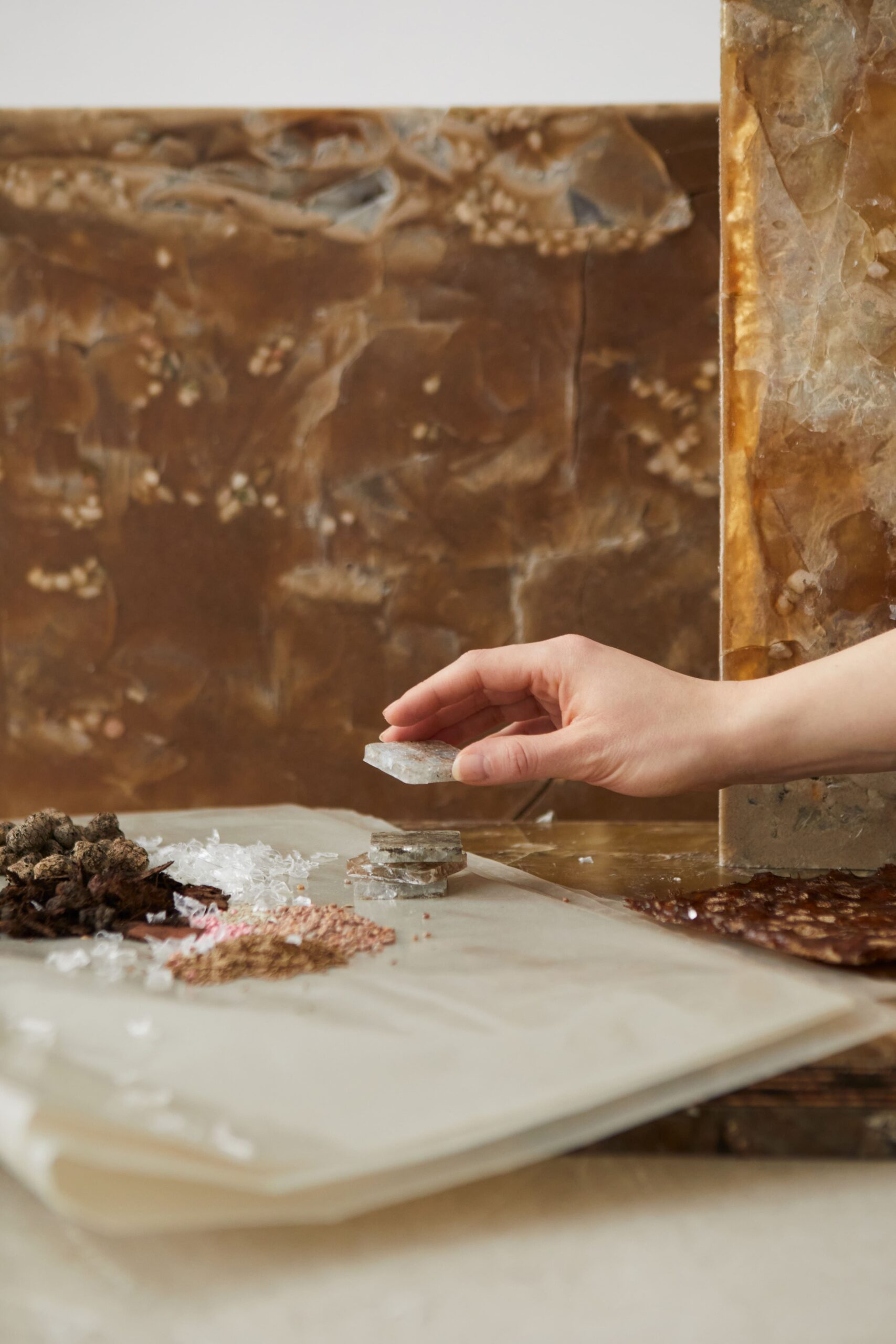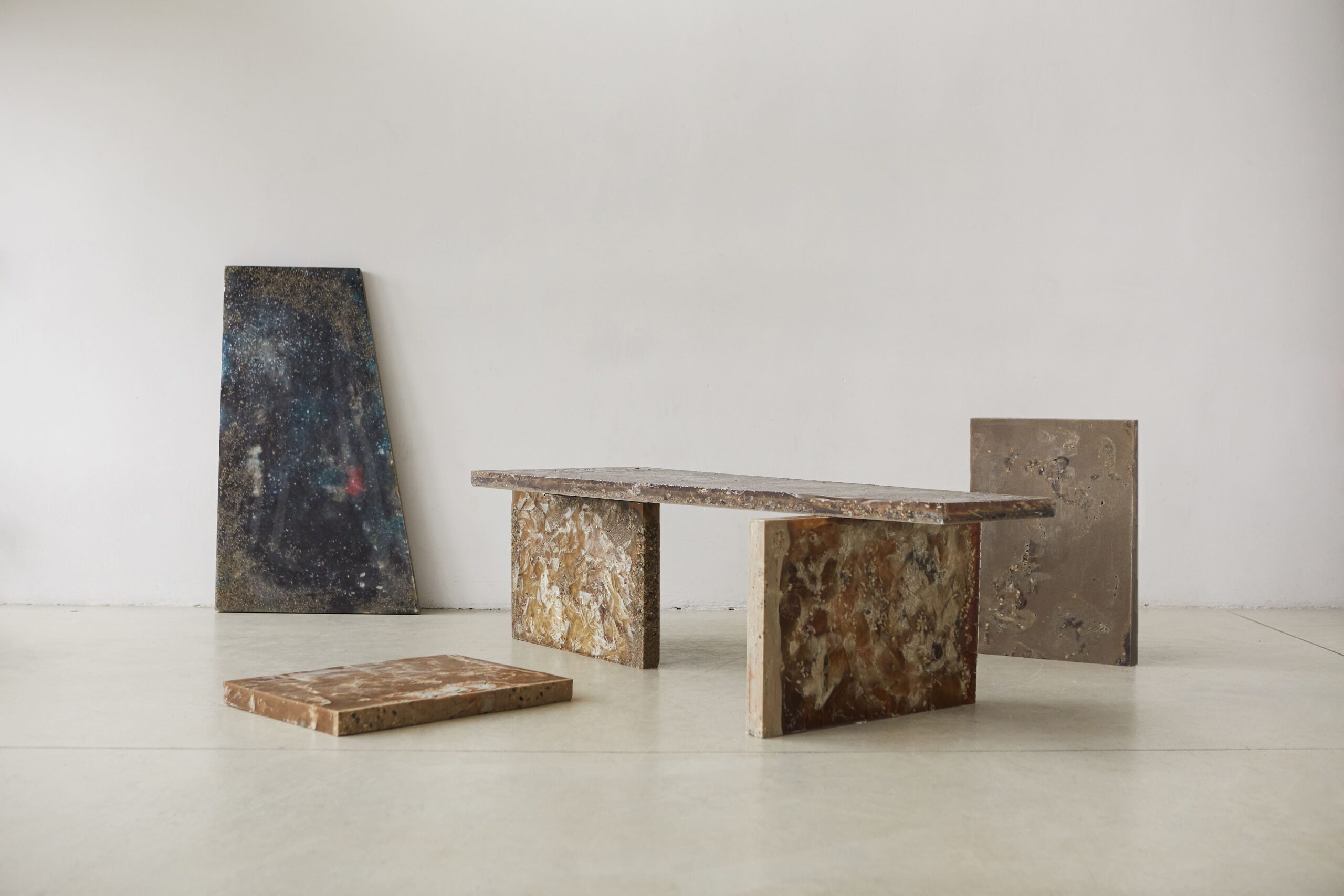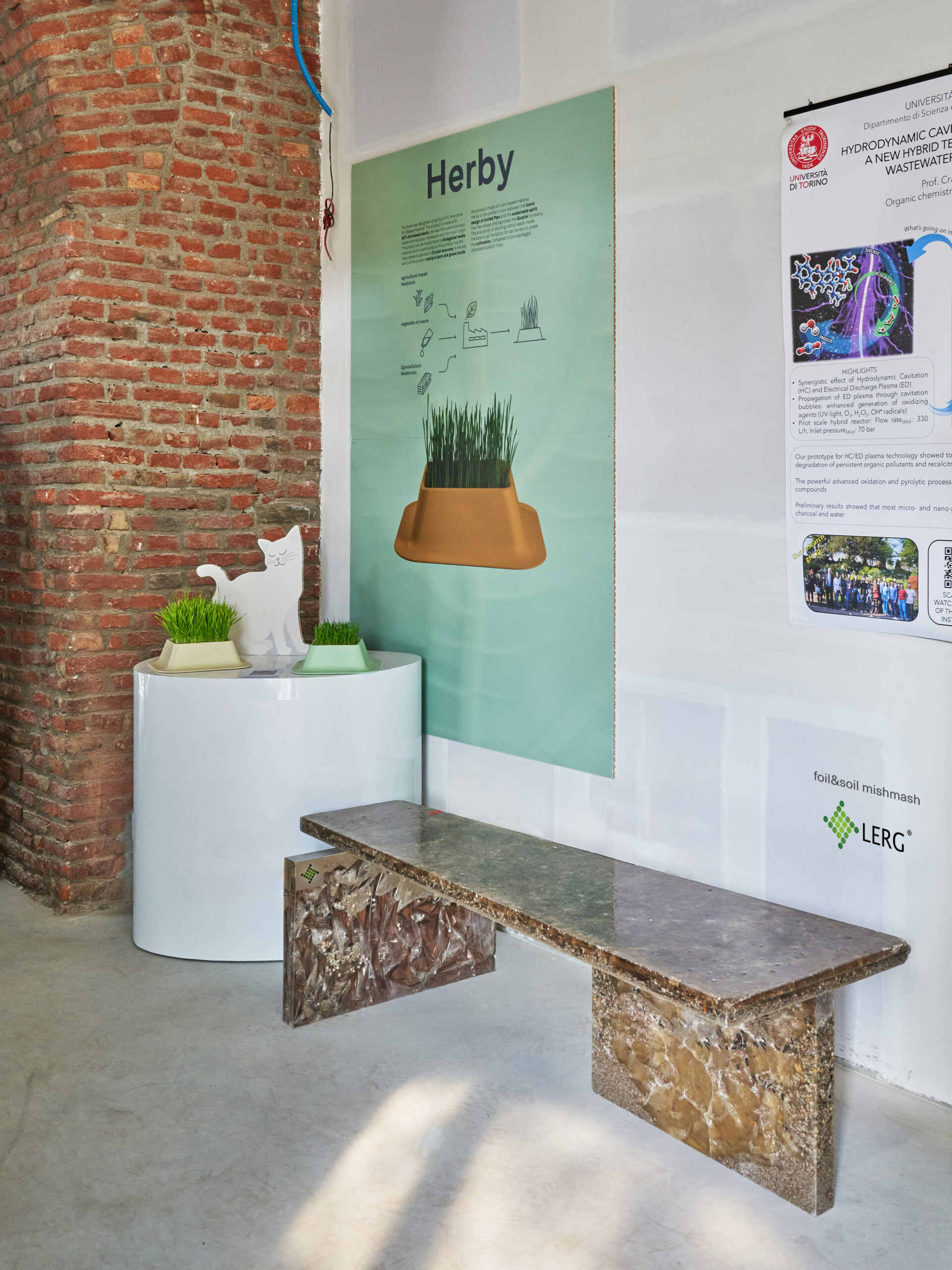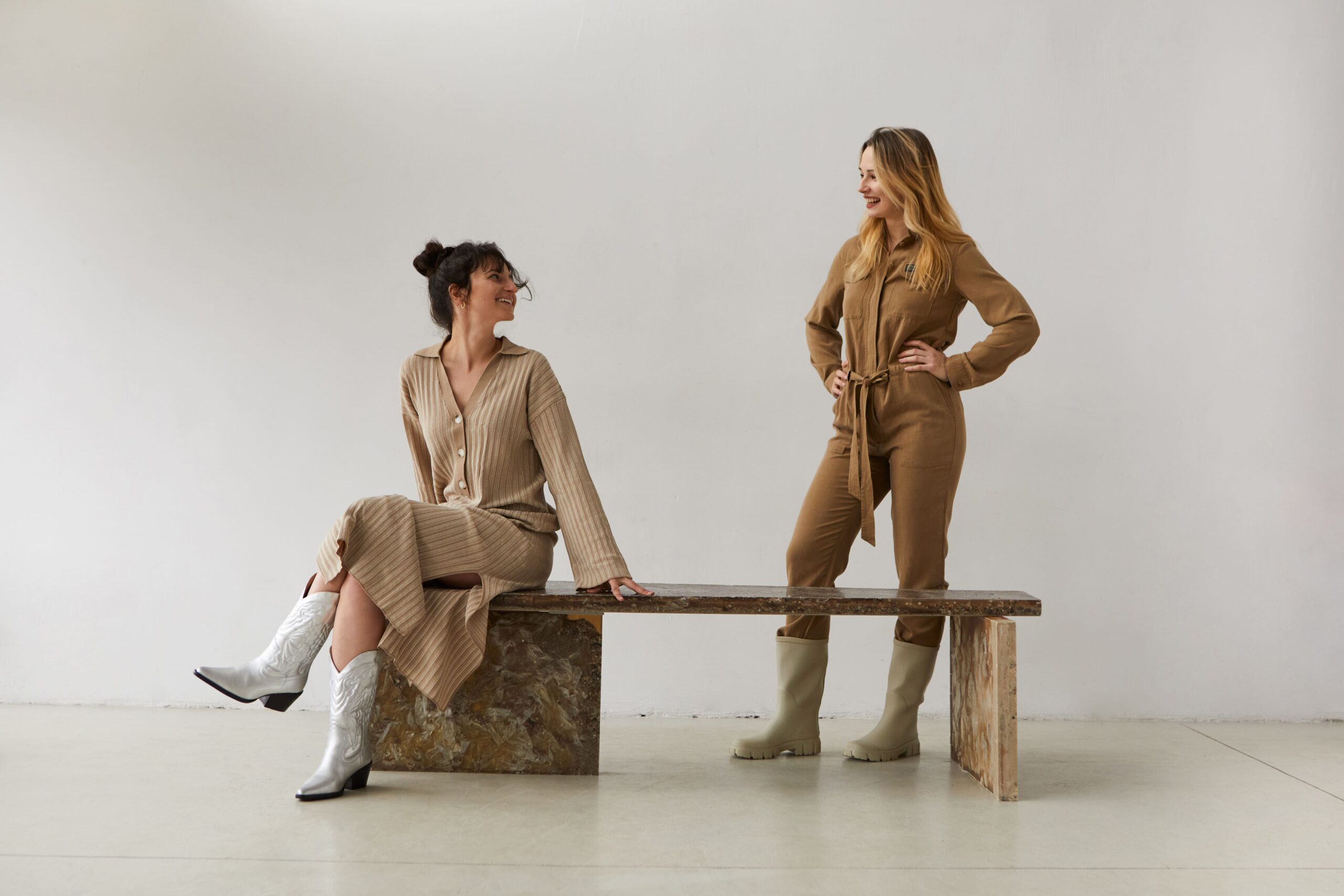Magdalena Górecka –is an architect working in Poland, Austria and Ghana. She completed architectural studies at the University of Applied Arts in Vienna. She currently teaches at the Institute of Architecture in Vienna and works as a visiting lecturer at several universities such as the ETH in Zurich. She gained her professional experience while working for international firms, mainly on cultural and residential projects at MVRDV, Rotterdam. She runs her own design studio – modelsoffbeauty.
Magdalena Skowyra –is an engineer and a master of medical physics. She obtained her doctoral degree at the Department of Medical Technologies at the DTU Technical University of Denmark in Copenhagen. She is currently continuing her research as a PostDoc at the Department of Chemical and Biochemical Engineering at the Danish Polymer Center Group. Her interests include materials science, polymer chemistry and technology, and radiation protection.
Górecka and Skowyra are developing an experimental laboratory, Foil&Soil Mishmash, which aims to design future Anthropocene fossils and spaces that connect distant geological eras and the contemporary consumerism. They are currently working on a new material, a conglomerate of foil and soil which aims to bring unknown organic and synthetic phenomena into surprising spatial and material scenarios.
How did the joint collaboration begin?
Our collaboration began as early as late 2020. At that time, we got in touch with Mr Wiesław Tarnawski who is a chemical engineer at LERG and who expressed interest in producing a small sample from used LDPE film, pebbles and sand. The result was surprisingly beautiful and interesting; the conglomerate – a tough and durable material – was unlike anything we had seen before. At the time, we used this sample for an urban design project as a potential building material for the designed structures.
Where did the idea for Foil&Soil Mishmash come from?
Foil&Soil Mishmash is a fusion of thoughts, dreams and determination of two innovative souls whose have a vision of sustainable development and beauty as part of everyday life. The idea shone in our home town of Dębica, in an area where more than 83% of the land is occupied by farmland. There was a strong desire to use our knowledge and experience and symbolically reconnect with the place where we grew up. Behind the idea there is hard work of an interdisciplinary team including an architect, a materials scientist, engineers from LERG and local craftsmen.
The idea has come both both our identity and background as well as long trips through the Polish countryside where plastic has been observed to be increasingly used and its waste to be piled up. The greenhouse industry covers around 405,000 hectares of land across the EU and shows a steady upward trend. Much of this type of agricultural business is the intensive and energy-intensive agriculture using low-density polyethylene (LDPE), a common type of plastic which is used in the form of films that cover greenhouses. Unfortunately, in order to maximise agricultural production, films are imported and replaced almost every year, causing an increase in the amount of waste piling up in the Polish countryside. Therefore, we bring up a concept that accepts the challenge and has great potential to become a material that brings change both on a local and global level.
Foil&Soil Mishmash is an innovative post-plastic conglomerate made from upcycled LDPE film waste, soil and other agricultural waste collected from the countryside in the Podkarpacie region. The concept aims to find ways to give meaning and respect to agricultural waste and bring life back to the countryside that has been forgotten.
Foil&Soil Mischief is repetitive in terms of chemical composition and functionality but unique in terms of its aesthetics and beauty. The first prototype of the project is a publicly accessible seating area, designed to give villagers a place to have a rest and produced locally from their agricultural and plastic waste. Our idea serves not only as a physical product but also as a symbolic reminder of how much the countryside has to offer.
Plastic is a material with the same chemical composition and properties all over the world, hence the prospective use of the conglomerate could be expanded to other countries in Europe and the world.
How was the product noticed “in the world” and what are or could potentially be its future developments (awards, exhibitions, practical applications etc.)?
Our conglomerate was first noticed in Vienna at the Essence exhibition. Already at that time we received many enquiries and invitations to present the product, even though its scale did not go beyond one small sample created in the LERG laboratory and computer-generated simulations of potential applications.
Then the time came to take a serious look at our idea and choose a direction for its development. The idea to create an interdisciplinary studio combining architecture, materials engineering and local craftsmanship was undoubtedly something we had always dreamed of. Therefore, we again approached the engineers from LERG with a request to continue their attempts to work on the material. First, we developed a proposal for the exhibition of the Polish Pavilion at the Venice Architecture Biennale, where we could test ideas. Then we focused on the conglomerate itself and a specific utility scale, i.e. the creation of a bench or a table. The bench design was spotted by Rossana Orlandi, a world-renowned art curator from Milan, who invited us to participate in this year’s exhibition entitled “Ro Guiltless Plastic”. The exhibition took place on April 17-21 during the Milan Design Week 2023 and was accompanied by the ‘RoPlastic Award’ competition for which more than 600 works from 73 countries around the world were submitted, from which the jury selected 194 finalists in 3 categories. Our work was shortlisted in the Emerging High Technology category and distinguished as a finalist along with 54 other works from around the world.
The competition focused on projects that transform the negative value of waste into highly innovative opportunities based on advanced technologies employed to reuse the waste, reduce environmental emissions and adapt habits to climate changes. Our rural bench was an excellent example of the upcycling of agricultural waste as a technologically efficient product for rural populations and it attracted a crowd of visitors who were interested in how it was prepared and congratulated on the unique idea that stood out from other projects.
We hope to be able to visit Milan next year, too, to see and participate in other inspiring exhibitions to come.
As for future plans – the next few months will be filled with work done on the ground, with farmers, ranchers and local authorities in order to gain an in-depth understanding of the needs of local residents. At the same time, we plan to work on balancing the composition of our conglomerate in order to make it as strong, resistant and environmentally friendly as possible by increasing the content of LDPE film and post-agricultural waste in its composition. We are also planning to take part in other competitions and exhibitions dedicated to the sustainability of development, both in Poland and across Europe.
What could be the environmental significance of the product?
The main focus of the Foil&Soil Mishmash sustainability project is on two main areas: creative waste management and production and assembly methodologies.
The originality of our concept lies in the reuse of waste post-agricultural film that has been intensively used to protect crops from the cold. Our concept is to give a second life to the LDPE film in a transformed and attractive form. By upcycling on site and preventing waste agglomeration in rural areas, we stay in harmony with the local environment. Additionally, we could collaborate with municipalities to identify the needs of local communities and to modify our material accordingly based on the availability of waste.
By removing the waste from its place of storage and bringing it back with a new and altered appearance, we create an innovative way of thinking and living where nature, culture, people and the environment are together, building their sustainable future. By creating the conglomerate as a joint effort, the villagers could potentially be united, and by using it, all living organisms (i.e. animals, insects, birds, fungi) could unite to learn to live together again.
Moreover, the proposal is not just a series of pro-environmental structures. What is important, the knowledge so produced is intended to stay in the countryside and spread through the region. The material production methodology and construction process can easily be replicated in other villages that are densely covered with polyethylene greenhouses or other forms of extensive agriculture business.
The global rural population is currently 47% although this percentage is forecast to drop to 30% by 2050. This means that the increasingly populated cities will be home to an estimated 6.7 billion people (source: Julius Baer). According to the UN, there must be a balance between urban and rural environments because only then a true sustainability can be achieved in both environments.
Due to the abandonment of crops, villages are becoming empty. This phenomenon is caused by the breakdown of an ecosystem that has existed for centuries. Such changes also affect the local fauna which may disappear, and the villages themselves which are likely to slowly turn into deserts.
At the present moment, there are no extensive recycling programmes for plastics in the Polish countryside; their disposal is still very expensive which is the reason for the waste to pile up in the countryside. It is necessary to implement a systemic solution for plastic waste management.
The carbon footprint of our conglomerate remains much lower than that of cement or metals. The main components of our conglomerate are synthetic waste and organic products encapsulated in an epoxy resin coating delivered by Sarzyna Chemical.
Another important factor of the sustainable development is public awareness, or, in this case, the urban and rural beliefs. The project aims to change the common perception that rural areas are just outdated and old-fashioned settlements that supply vegetables, flowers, plants and meat products to the cities. Villages can be the future in the field of creation of high-end design and innovation.
Why did you choose LERG from Pustków as your partner/sponsor for the project?
LERG has an excellently equipped laboratory and trained staff. On top of that, an extensive pro-environmental programme which is very important to us. LERG’s collaboration with specialised research institutes all over Poland and with specialists who have an artistic sensibility in addition to their technical knowledge is very helpful. The collaboration with Mr Wieslaw Tarnawski, a process engineer from LERG, Mr Piotr Majder, the product manager from Sarzyna Chemical (one of the companies within the LERG Group) and their dedicated team is inspiring and, most importantly, it provides the opportunity to develop the product locally in collaboration with carpenters, locksmiths, technical personnel and a whole range of professionals, without whom the project would not have come into effect.
“It is not often that we get to do such unusual projects. It was a real challenge to combine post-consumer polyethylene film with epoxy resin since these materials do not mix together but, in the end, it was a success. I think that the project has an awareness-raising effect; it draws public attention to recycling, in this particular case to the post-consumer film from agricultural crops,” says Wiesław Tarnawski.
“Epoxy resins applied in a thoughtful way offer unlimited possibilities. The idea of success in unusual applications/solutions is a thorough analysis from the ‘finished product’, through the problems and challenges that may arise in course of the project to the selection of the right epoxy composition – and literally in that order. Having worked with clients for more than 20 years now, I can certainly say that epoxy and art often go together and they like each other a lot, e.g. resin tables, paintings, figures and jewellery that have recently become fashionable as well as all individual designs by our clients. It is very satisfying to take part in “non-typical” projects because, in spite of many technical problems, you can quote often admire the final effect and know that you have once again risen to the challenge,” Piotr Majder concludes.
LERG attaches great importance to caring for and protecting the natural environment. Sharing common goals and ideologies drives and enriches the project with additional values that are often difficult to be verbalised. Thank you for this opportunity. We hope that this is not the end of our cooperation!
